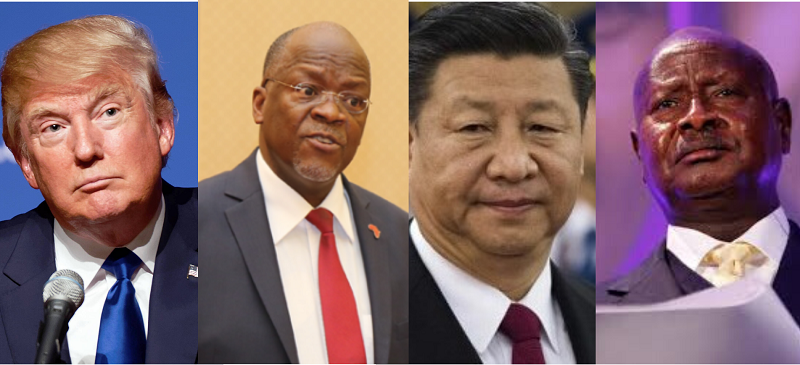"Shangri-la illustrates divisions in China"
January 5 Expected growth in Shangri-la is attracting entrepreneurs, writes Chris Fox, a Correspondent from Canada now living in Beijing, who says the results illustrate economic and ethnic divides in China.
Expected growth in Shangri-la is attracting entrepreneurs, writes Chris Fox, a Correspondent from Canada now living in Beijing, who says the results illustrate economic and ethnic divides in China.
Shangri-la is getting ready for a boom.
Dreaming of the money-spending crowds that clog the alleys of nearby Lijiang and Dali, Shangri-la has been feverishly improving its infrastructure and marketing its Tibetan heritage in hopes of copying their success.
Soon that success will get closer: next year new highway and rail links will connect Shangri-la to Lijiang, cutting travel time between the two from the current five hours down to less than two. The world is coming closer too: last year Yunnan’s capital Kunming opened its sleek new international airport, and by 2020 a high speed rail between Kunming and Singapore is slated for completion.
The promise of mass tourism in an accessible Tibetan setting is what brought 24-year old Annie, a Tibetan from Jiuzhi County Qinghai (Amdo in Tibetan), to Shangri-la. Her new store, like many new boutiques, bars and hostels sits un-patronized in the empty November streets. Happy with the low lease she secured in the off-season she, like many new arrivals, is waiting for the summer after the rail opens for the real business to start.
More interesting than Annie’s business savvy is the calculus that brought her to Shangri-la in the first place – and her relationship with the locals after she arrived.
“In fact, originally I wanted to go to Lhasa. But since 2008 (date of riots in Lhasa) it’s almost impossible for Tibetans from Qinghai to go to Lhasa, especially people from my county. We’ve tried before to take a bus there, but always we are turned away. We cannot travel to parts of our own country. In this sense we are not free.”
In Shangri-la, though, it is relatively easy for Annie to travel, open a business, have a social life in her native language, interact with Han Chinese, and even meet foreigners. From Gansu Tibetan bar-owners to Ganzi Tibetan guides, many feel the atmosphere in Shangri-la is simply more “open” (kaifang). Indeed, for Tibetans Shangri-la is becoming increasingly unique as a place that is Tibetan in ethnic makeup but cosmopolitan in character. Save perhaps the Tibetan quarter in Chengdu, there is likely nowhere else in China where Tibetans so freely interact with foreigners and Tibetans from other parts of the country.
Ironically, the social life Annie maintains in her native tongue doesn’t include many local Tibetans. The dialect of Tibetan locally spoken is so different from hers that she generally prefers to communicate with them in Mandarin (itself a language she only recently acquired) while socializing mainly with other non-local Tibetans and the occasional foreigner. Many non-local Tibetans I spoke to (albeit in Mandarin, not Tibetan) felt the same. The lack of understanding seems to run both ways: a local Naxi warned of the many “cheats” (pianzi) among the Amdo Tibetans. Similarly, several local Tibetans emphasized the “great number” (hao duo) of incoming outsider Tibetans.
In Shangri-la, the influx of non-local Tibetans is both illuminating divisions in the Tibetan community while shedding light on the interplay of economic growth and ethnic policy in China today. Amidst the current growth and change in China, in Shangri-la at least, we see that social cleavages don’t run solely along ethnic lines.
photo credit: `James Wheeler via photopin cc
…………………………………………………………………………………………………………………
About me: I’m from a touristy little town in Canada. Now I live in Beijing. For most of what I could loosely call my adult life I’ve been fairly obsessed with Asia in general and China in particular. So, naturally enough, I’m interested in issues of development, authoritarianism and civil society. I also enjoy travel and 30+ hour train rides.
In the future I hope to work in the Foreign Service or some international body that does good things in interesting places.
…………………………………………………………………………………………………………………
Opinions expressed in this article are those of the author and do not necessarily represent the views of the Commonwealth Youth Programme. Articles are published in a spirit of dialogue, respect and understanding. If you disagree, why not submit a response?
To learn more about becoming a Commonwealth Correspondent please visit: http://www.yourcommonwealth.org/submit-articles/commonwealthcorrespondents/
…………………………………………………………………………………………………………………




